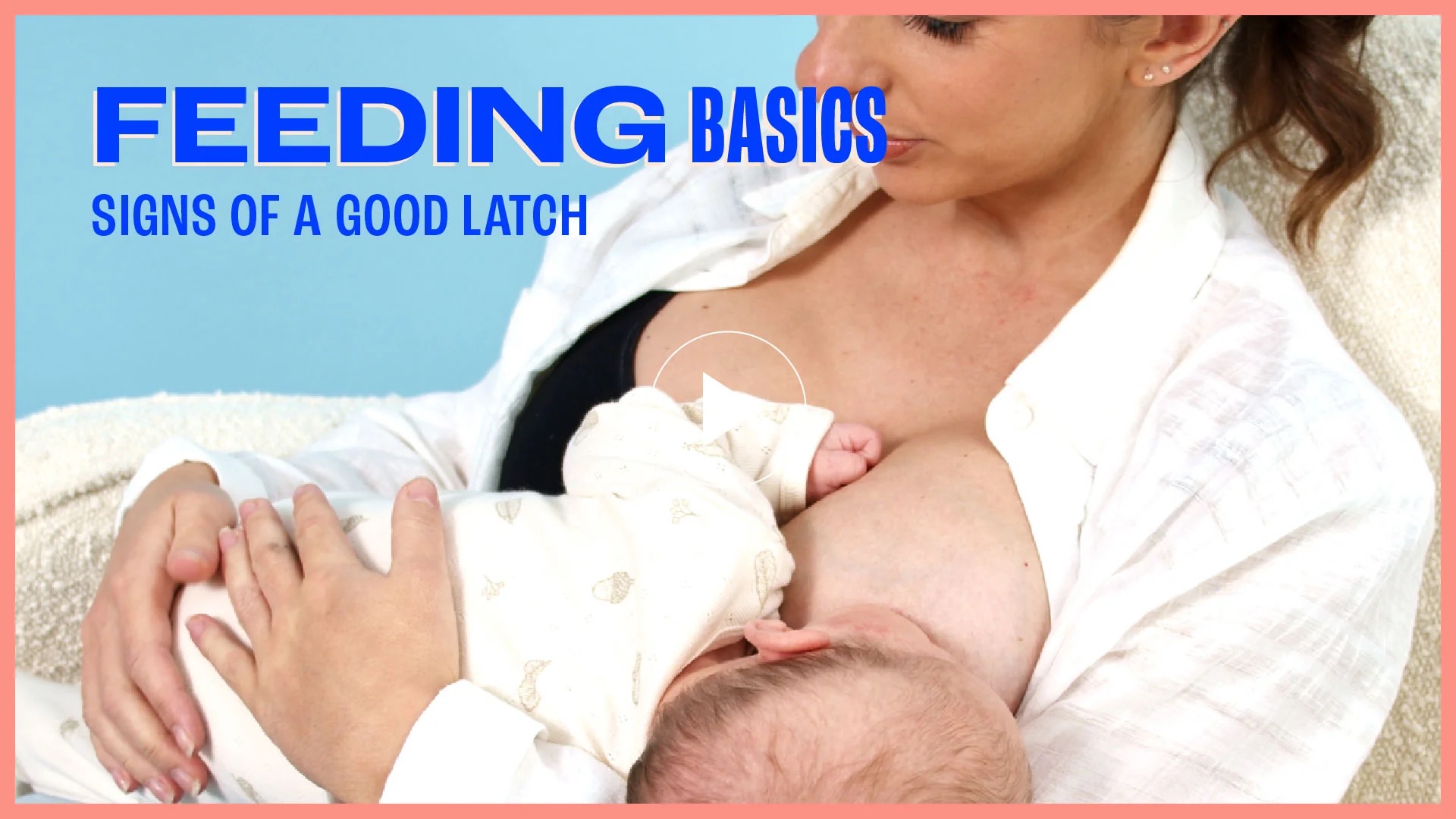‘The latch’ is the term used to describe how a baby’s mouth fits over the nipple and the breast. A few other terms you may hear or come across include ‘the attachment’ or ‘the fit’ or ‘the hold’. The latch is a key part of breastfeeding as it can greatly affect how much a baby drinks and a mothers level of comfort.
To secure a good latch, Joelleen Winduss Paye, IBCLC Lactation Consultant advises to;
- Align your baby’s mouth opposite the nipple, allowing them to suck the nipple into their mouth.
- From here, firmly pull the baby in so that their cheeks are pressed into the breast (symmetrically), their chin is buried and their nose is deep.
- The latch will be unique for each mother and baby, and also each breast. Making micro-movements towards discomfort while your baby is sucking can help to find your ideal latch.

With a good latch comes a good feed. This can present as;
- You’re comfortable and there is no pain
- You can detect rhythmical sucking
- Your baby is swallowing (making a soft “cuh” noise as they gulp)
- Your baby should have a decent sleep post feed or seem visibly content after each feed
- Your breasts should feel softer post feed
Having trouble with latch
A troubled latch can be emotionally frustrating as well as painful and can result in your baby trying to feed more, giving you no reprieve. If you’re concerned about your latch, you may like to consider nipple shields which are thin flexible silicone covers that sit over the nipple before your baby attaches. Shields have holes to allow milk to flow through and could be suitable for you if;
- You have a flat, short or an inverted nipple shape. If you think you may have inverted nipples, during the pregnancy is an optimal time to check this over with your midwife or your GP so you can prepare ahead of time.
- You’re experiencing constant and continuous nipple pain. Nipple shields won’t treat or cure the cause but they can provide relief.
- You have a smaller baby who is having trouble achieving a firm latch.
If you do opt for nipple shields, Joelleen recommends you wean your baby off breastfeeding using shields after a period of 4 or so weeks.











